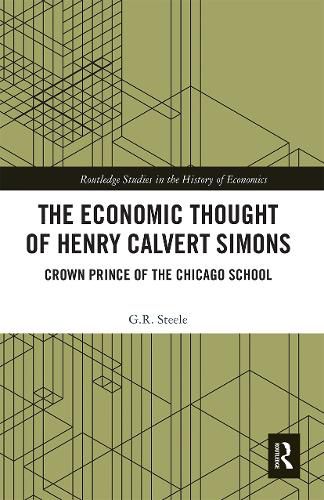Readings Newsletter
Become a Readings Member to make your shopping experience even easier.
Sign in or sign up for free!
You’re not far away from qualifying for FREE standard shipping within Australia
You’ve qualified for FREE standard shipping within Australia
The cart is loading…






Drawing on years of research, Gerald Steele delves into the diverse ideas of Henry Simons, a neglected economist whose work in the 1930s on monetary and financial instability is extremely relevant to today’s debates about commercial bank credit, the interdependence of fiscal and monetary policy, and financial regulation.
Steele describes the emergence of the first Chicago school of economics and its distinctive difference to the School subsequently associated with the Monetarism of Milton Friedman, and shows how Simons provides the basis for what is now referred to as ‘the fiscal theory of the price level’ and how this differs from the monetarist attempt to control prices by controlling the supply of broad money.
This book will be of interest to advanced students and researchers of the history of economic thought, economic history, macroeconomics and banking and finance.
$9.00 standard shipping within Australia
FREE standard shipping within Australia for orders over $100.00
Express & International shipping calculated at checkout
Drawing on years of research, Gerald Steele delves into the diverse ideas of Henry Simons, a neglected economist whose work in the 1930s on monetary and financial instability is extremely relevant to today’s debates about commercial bank credit, the interdependence of fiscal and monetary policy, and financial regulation.
Steele describes the emergence of the first Chicago school of economics and its distinctive difference to the School subsequently associated with the Monetarism of Milton Friedman, and shows how Simons provides the basis for what is now referred to as ‘the fiscal theory of the price level’ and how this differs from the monetarist attempt to control prices by controlling the supply of broad money.
This book will be of interest to advanced students and researchers of the history of economic thought, economic history, macroeconomics and banking and finance.